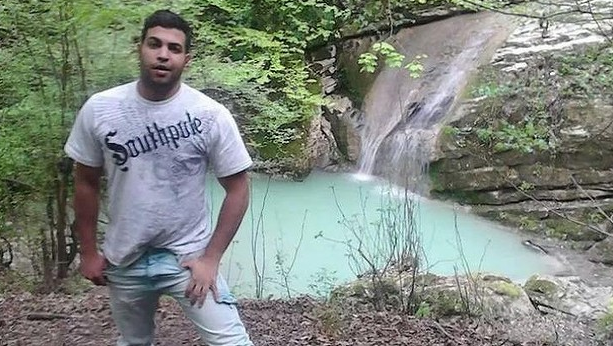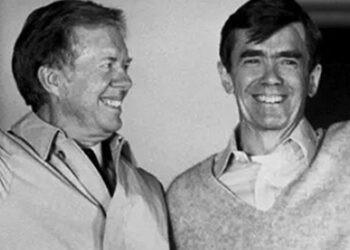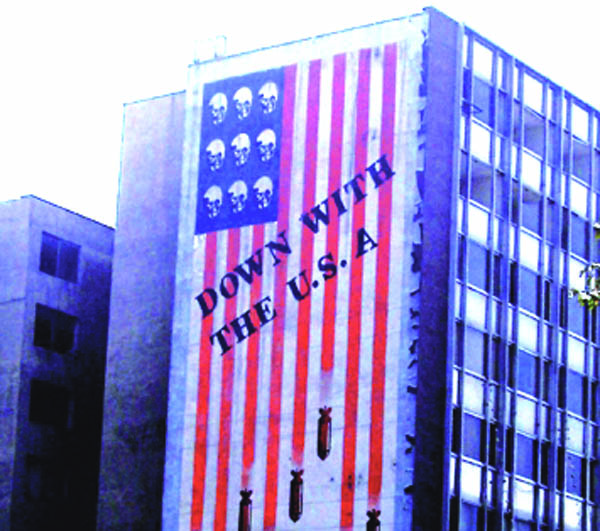September 12-14

Another Iranian refugee in Australia has died, this time when the man did not get treatment for a simple cut on his foot that became infected and soon killed him from septicemia.
Hamid Kehazaei was just 24 years old. He had tried to reach Australia by boat last year. Like the other boat people caught by the Australian Navy in the last two years, he was sent to Manus Island, a part of the tropical country of Papua New Guinea, and locked in a detention center there.
His minor foot injury occurred about three weeks before his death. When it became clear he was in serious condition, he was flown to the Papuan capital of Port Moresby, where he suffered a heart attack. Doctors there ruled he needed more treatment than they could provide and he was flown to Brisbane in Australia. There he was pronounced brain dead four days later, last Monday, but sustained by physicians while his family in Iran was contacted.
The family accepted the determination of the Australian doctors that Kehazaei was brain dead and agreed to end the care sustaining him. His life support was removed Friday night. The family asked that his organs be donated to others, but the doctors in Brisbane said the septicemia had polluted his organs and ruled that out.
Septicemia is a condition in which infection is spread through the body by the blood stream.
Kehazaei was one of the longest residents of Manus. He was among the first batch of asylum seekers sent there in 2013 after the Australia government struck a deal with Papua New Guinea to open the detention center on Manus.
He was also the second Iranian confined on Manus to die this year. In February, during rioting by some of the detention camp inmates, Reza Barati, at 23 one year younger than Kehazaei, was badly beaten and died.
Kehazaei’s death brought a storm of criticism down on the Australian government from opposition critics and immigration advocates who saw the death as an example of government ineptitude in running the detention center in another country.
The family in Iran also demanded an independent investigation into what happened.
But the Immigration Department said the death would be investigated by members of the department’s staff.
In Tehran, Hassan Qash-qavi, the deputy foreign minister for consular affairs, blasted the Australian government. “The bad respiratory conditions on Manus Island and the impact of this region’s sewage on people’s living conditions made the Iranian national’s health conditions grow critical and led to his septicemia,” Qashqavi said, without indicating where he got his information.
“Sometimes, the refugees are deliberately kept in bad weather conditions, made to suffer malnutrition and don’t receive proper medical treatment, and we have always protested at such a behavior of the Australian government,” Qashqavi said.
In Australia, Immigration Minister Scott Morrison issued a statement after Kehazaei’s death saying, “An imam was present at the time of death and the government of Iran will be informed.
“I am very saddened by this man’s passing and on behalf of the Australian Government I extend our deepest sympathy to the man’s family and friends.
“My department has and will continue to provide support to the family and has been in contact with family members during the course of the man’s treatment.
“I have instructed the department to make the necessary arrangements to facilitate the repatriation of the body of the deceased man to his family in Iran.”
He said the Immigration Department’s chief medical officer would conduct an in-depth clinical review of Kehazaei’s case.
“This will be in addition to any medical review that will also be undertaken by the medical services provider [on Manus], International Health and Medical Services,” Morrison said.
“I will await the outcomes of this report before making any further comment on the medical treatment provided in this case.”
Ian Rintoul, the spokesman for the Refugee Action Coalition, which has been highly critical of the government’s immigration policies, accused the authorities of taking too long to act.
Rintoul asserted that Kehazaei had sought medical attention for days before being flown off Manus.
He said Kehazaei was a victim of “the shocking conditions and medical neglect on Manus Island.”
“It is inexcusable that he developed septicemia on Manus Island,” he said. “Nothing else to describe it, but it is just sheer negligence.”
Mark Gillespie of the same organization said medical facilities on remote Manus Island were “rudimentary” with even routine medical treatment requiring transportation to Port Moresby.
Morrison said in his statement that criticisms of the case were “not based on any primary knowledge of the event or the circumstances. Such prejudicial commentary is unhelpful and unfortunate.”
The immigration spokesman for the opposition Labor Party, Richard Marles, said the government had taken the right step in asking the chief medical officer to review the case. “Mr. Morrison needs to ensure that review is made public as soon as possible,” he said.
“Labor has strong concerns about the lack of transparency surrounding the treatment of asylum seekers…. Every single Australian-funded facility must be run in a manner that is safe, humane, dignified and allows for proper oversight.”
An Australian who formerly worked on the island as a guard at the detention center said he wasn’t surprised at Kehazaei’s death, saying conditions on the island are filthy.
Beau Mitchell told the Australian Broadcasting Corporation (ABC), “There’s no air conditioning, the beds are extremely close together. The living standards are pretty quite filthy. Often they’d be standing on concrete to have a shower that was literally falling apart underneath them, just completely rotting away.”
Mitchell said he quit his job in June disgusted at what he saw. But he insisted the medical staff on Manus is trying to do their best to look after detainees.
“The people that were actually working there did a fantastic job with what they had to work with,” he said.
Patients “were seen on almost on a triage basis. Obviously, if it was something quite severe, they’d be seen quickly. But, if it wasn’t an emergency, it was a two-to-three-day wait normally.”
Ruth Hudson is a lawyer who has been hired by the Kehazaei family. She believes there are signs of negligence. “This wasn’t a fatal injury until the government made it so,” she told the ABC.
Hudson said the family is seeking “justice for Hamid,” but has been given very little information about the treatment or events prior to Kehazaei’s transfer to Brisbane.
“They want me to find answers as to why their son is now gone, in circumstances where his life could have been saved,” she said. “This just does not happen in a civilized society.”















